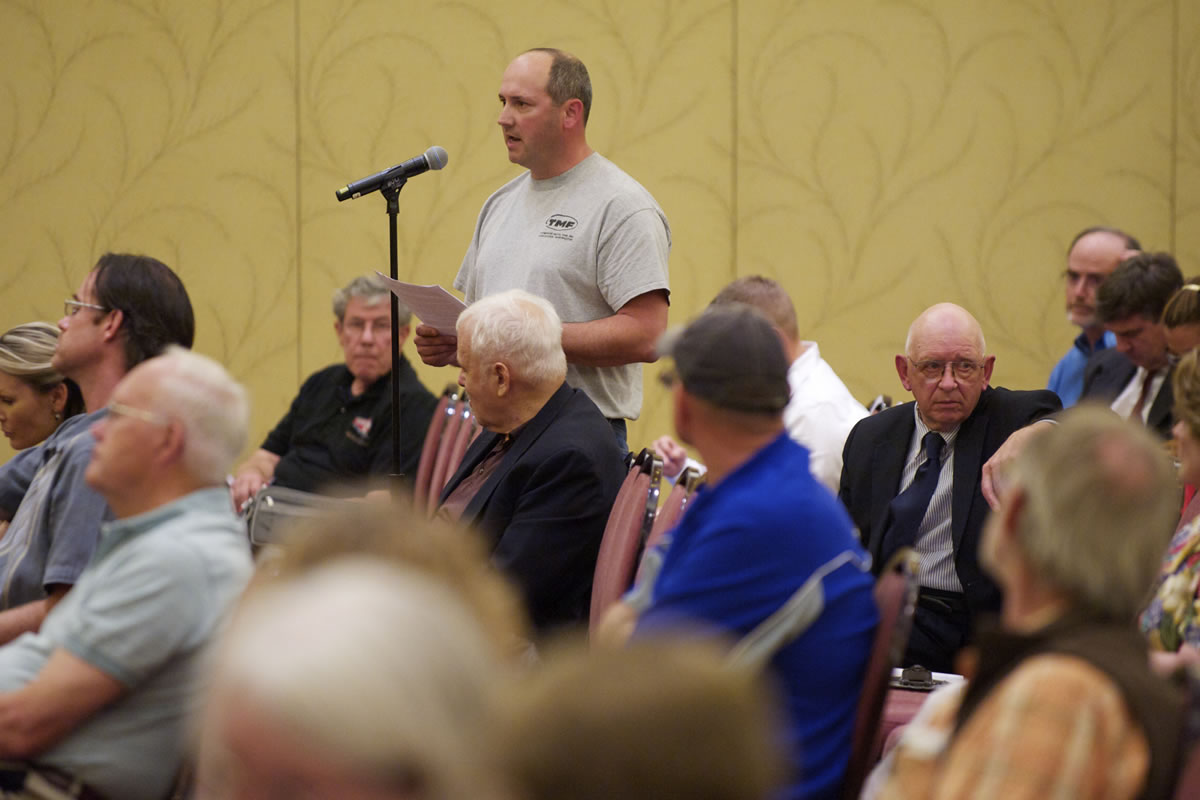As the U.S. Coast Guard hosted a second night of testimony on the Columbia River Crossing on Wednesday, many Clark County residents turned their attention to a business with perhaps more at stake than any other in the project’s outcome.
Their focus: Thompson Metal Fab.
“They are, for all intents and purposes, our Boeing,” said state Sen. Ann Rivers, R-La Center. “And we need to take care of them.”
Thompson is one of three major manufacturers upstream of the Interstate 5 Bridge negatively affected by the $3.4 billion project that would replace it. But Thompson is the only one that hasn’t yet come to a mitigation agreement with the CRC. The other two, Greenberry Industrial and Oregon Iron Works, separately confirmed this week that they had finalized deals. All three companies operate facilities at Columbia Business Center in Vancouver.
Greenberry and Oregon Iron Works disclosed few details about their mitigation agreements, including how much taxpayer money they’d receive as compensation.
The CRC as proposed would build a new bridge over the Columbia River with 116 feet of clearance — too low for the companies’ largest products to fit underneath. The existing I-5 Bridge allows for 178 feet of clearance when lifted.
The Coast Guard is expected to decide by Sept. 30 whether to approve a crucial bridge permit the CRC needs to move forward. Project officials submitted the application in January and sent additional materials in April. The Coast Guard will accept public comment until June 20.
Among the more than 150 attendees at Wednesday’s hearing, more than 70 signed up to speak at the Hilton Vancouver Washington. About 40 people took the microphone at a similar meeting Tuesday in Portland.
But among Wednesday’s testimony, many focused on the economic impact of the CRC on upriver businesses — including Thompson Metal Fab.
“We strongly believe that we are a uniquely qualified and strategically located company,” said Jim Nichols, a shop superintendent with the company. “We are an economic anchor in Southwest Washington and must not become a casualty of restricted navigation along the river.”
On Tuesday, Thompson president John Rudi told the Coast Guard that relocating his company downstream of the new bridge is the only way to meet its current and future needs. But he noted the company still supports the CRC — as long as the company is properly mitigated.
Thompson employs more than 300 workers. Among its largest industrial products are oil rig components bound for Alaska.
Lance Killian, whose company is one of the owners of Columbia Business Center, questioned economic projections used by the CRC in materials sent to the Coast Guard. They show declining oil production and little demand for new rigs, “but that’s already been proven wrong,” Killian said. He cited recently announced plans by British Petroleum to expand oil drilling in northern Alaska in the coming years.
“If not resolved, challenges presented by the new Columbia River bridge could cost local businesses and our community millions of dollars and result in the loss of thousands of jobs,” said Killian, president of Vancouver-based Killian Pacific.
The CRC has said a 116-foot-high bridge would accommodate the vast majority of river users on the Columbia today. Supporters of the project who spoke Wednesday, many of them local union members, touted the CRC’s immediate and long-term economic benefit for a major freight corridor and the region.
The Coast Guard has said its primary goal is to protect the “reasonable needs” of navigation. A decision on the permit will ultimately come from its Washington, D.C., headquarters, after a recommendation by the agency’s District 13 office in Seattle.
The CRC would also extend light rail into Vancouver and rebuild freeway interchanges on both sides of the river. Despite funding uncertainties, project leaders hope to begin construction in late 2014.
Eric Florip: 360-735-4541; http://twitter.com/col_enviro; eric.florip@columbian.com.





